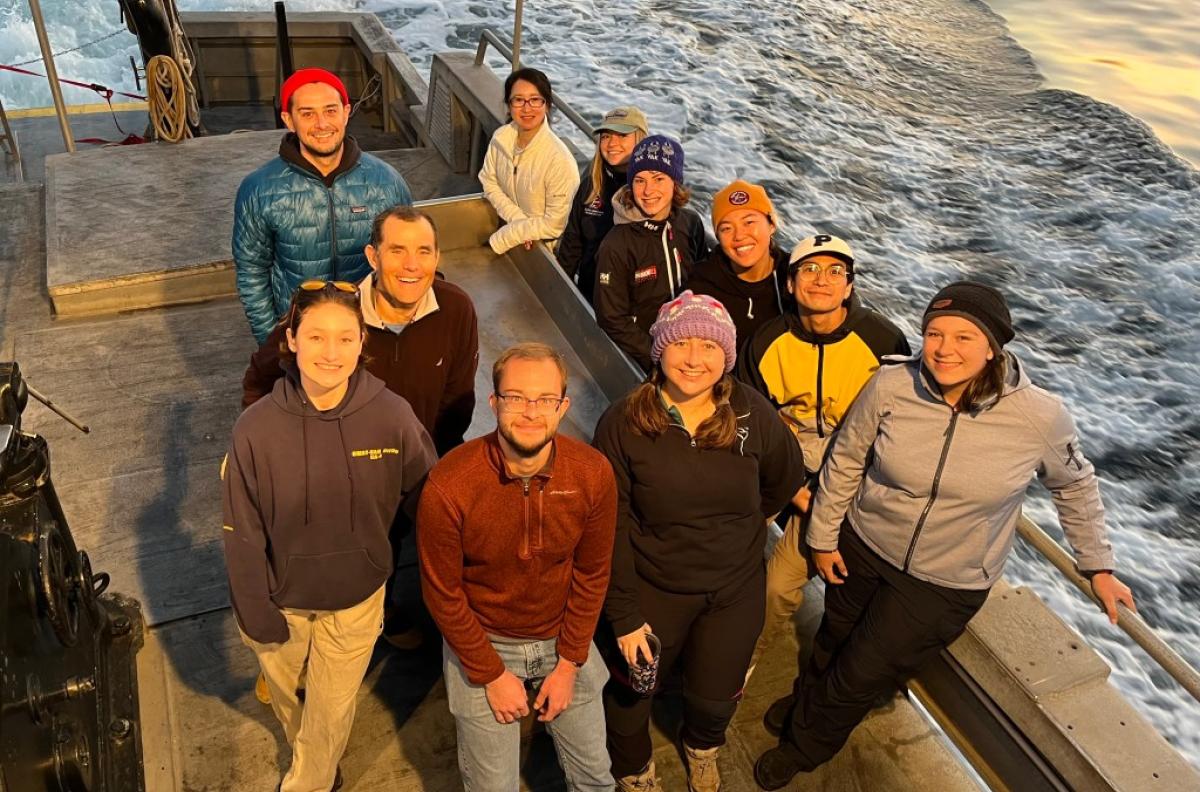
FIELDWORK: Valentine is seen here with a group of students and postdoctoral scholars on a research vessel, many of whom were enrolled in a class that Valentine was teaching about field studies in marine science. Photo Credit: David Valentine
From the Santa Barbara Independent
Pure DDT — the toxic insecticide banned in the U.S. in 1972 (but still in use in other parts of the world) — is poisoning the marine environment off the Los Angeles coastline near Catalina Island. The harmful chemical has blanketed the seafloor since hundreds of tons of DDT were dumped into the water more than 50 years ago.
UC Santa Barbara scientist David Valentine is the one who discovered the startlingly high concentrations of DDT 3,000 feet below the water’s surface, surrounding an underwater graveyard of leaking barrels filled with unknown chemical substances.
He says that it’s “goo-ifying the junk” of male sea lions (as well as destroying their spines, riddling them with tumors, and killing their kidneys) because of the nightmarish combination of herpes and toxic chemicals such as DDT (dichloro-diphenyl-trichloroethane) and PCBs (polychlorinated biphenyls).
In fact, the type of urogenital cancer only caused by that horrific duo is responsible for nearly 25 percent of adult sea lion deaths.
“It is the gnarliest cancer,” Valentine told me as we sat on the deck of a coffee shop in Goleta.
The sun was beating down, and Valentine was dressed casually, as someone might expect for a Santa Barbara–based oceanographer — baseball cap, cargo shorts, polo, backpack. But even with his laid-back appearance, it was never lost on me that he takes his work seriously.
“Just think if 25 percent of all human deaths were from one cancer,” he continued. “It’s an insane number — DDT is definitely part of that story.”
That’s just one of the problems associated with the stubborn, unforgiving compound polluting our ocean. Recent discoveries by Valentine and his fellow researchers show that it hasn’t broken down, remaining in its most potent form in high concentrations across miles of seafloor.
Efforts by Valentine and other researchers are now underway to map out the seafloor between the Los Angeles Coast and Catalina Island to determine how bad the problem really is. So far, the results have researchers feeling less than optimistic.
They’ve found that DDT was potentially dumped in two areas off the coast — Dumpsite 1, just northwest of Catalina Island in the Santa Monica Basin region, and Dumpsite 2, east of Catalina and 10 miles offshore of L.A. in the San Pedro Basin. Not only that, Dumpsite 2 seems to have no clear outer boundaries to the vast swath of ocean floor covered in debris and contaminated with toxic chemicals.
This chemical curse was bestowed upon the sea primarily by the nation’s largest DDT manufacturer, Montrose Chemical Corp., which operated a plant near Torrance from 1947 to 1982 and produced an estimated 800,000 tons of DDT over those 35 years. They poured the stuff straight into the water not far from the Channel Islands, which is a nursery for sea lions in California.
“They were manufacturing tons upon tons of this stuff,” Valentine said. “And they had pretty atrocious waste management practices.”
More to read at SB Independent